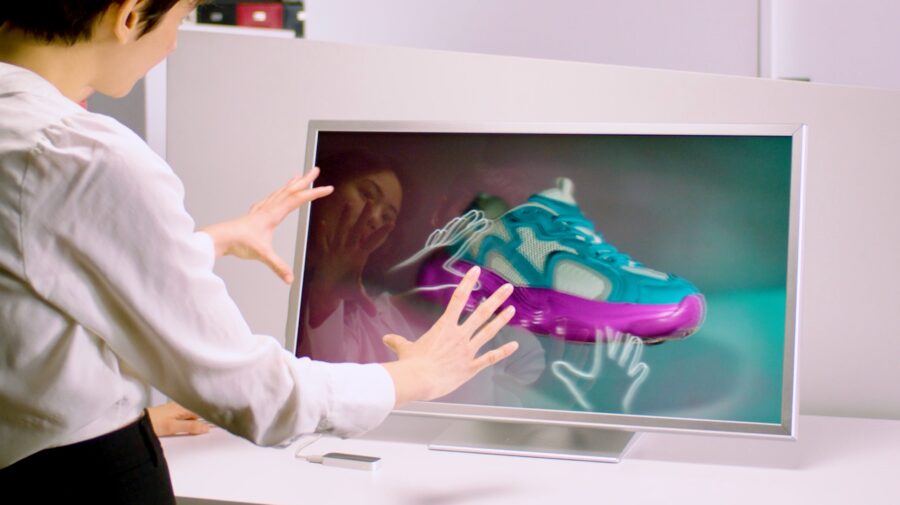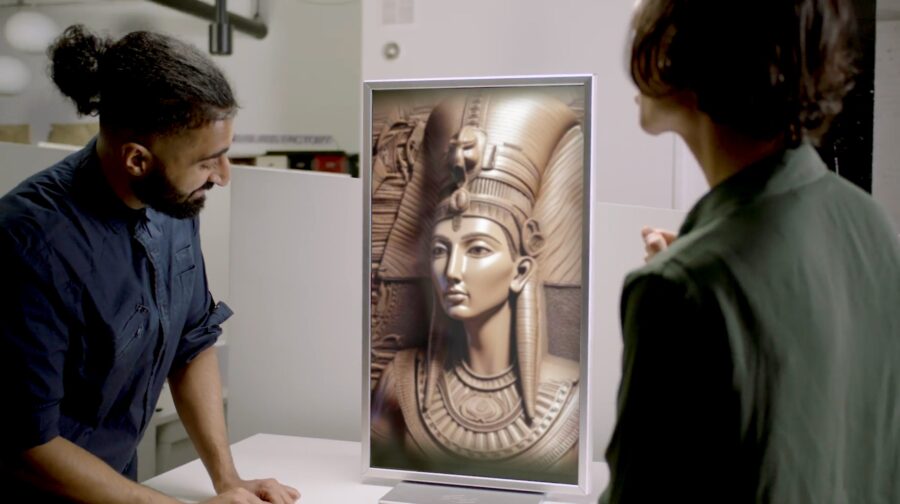
In General XR News
May 14, 2024 – Looking Glass, a provider of 3D holographic displays, has today announced that it has expanded its product line-up with the launch of its new Looking Glass 16” and Looking Glass 32” Spatial Displays.
The two displays bring group XR immersion and 3D visualization to professionals who require tools for developing, presenting, and interacting with 3D digital images, video and applications in real time, and remove the need for a headset entirely.
The new displays join the recently announced Looking Glass Go and complete the line-up of new spatial offerings from Looking Glass. While the Looking Glass Go is designed to turn 2D photos into 3D memories, Looking Glass stated that these new larger format devices cater to XR developers and professionals in design, engineering, education, research, and healthcare.
“We’ve seen so many industries and individuals benefit from our group-viewable spatial displays,” said Shawn Frayne, CEO of Looking Glass. “Everywhere, companies are creating a new generation of XR experiences using Looking Glass displays and the new 16” and 32” displays will only enhance their ability to do that.”
What industries are the Looking Glass Spatial Displays best suited for?
Looking Glass stated that the new Looking Glass 16” and Looking Glass 32” Spatial Displays are designed to adapt to any professional setting. The company’s CEO added a range of example professions and use cases that stand to benefit, including: “Creatives pushing the boundaries of digital expression, design studios creating the next generation of products, museums bringing artifacts back to life, marketers creating magical, immersive brand moments, medical students learning hands-on with realistic anatomy, and researchers investigating cellular drug therapies.”

What can the Looking Glass Spatial Displays do?
Features and functions of the Looking Glass 16” and 32” Spatial Displays include:
- 3D for Multiple Viewers: Broadcast 45-100 views for group-viewing experiences;
- Versatile Media Support: Displays holographic images, videos, and real-time applications in 3D;
- Peripheral Support: Support for a variety of sensors, enabling touchless gesture control for enhanced immersive experiences;
- Comprehensive Software Suite; Includes plugins for Unity, Unreal, Blender, and WebXR, as well as a 3D model importer and a powerful SDK for developing custom 3D/holographic content.
Each display comes in landscape or portrait orientation to accommodate different content formats and applications. Additionally, the thin form factor and sleeker design of the displays means that they are able to seamlessly fit into varying professional environments, and can be mounted flush to walls. The displays also include standard VESA mounting or a desktop stand, fitting various installation needs.
The new Looking Glass Spatial Displays are available now, with pricing starting at USD $4,000 for the 16” (currently available for USD $3,000 for a limited time). For the 32” display, a price was not provided, and Looking Glass advised interested buyers to reach out to their sales team.
For more information on Looking Glass and its 3D holographic displays, please visit the company’s website.
Image credit: Looking Glass
About the author
Sam is the Founder and Managing Editor of Auganix. With a background in research and report writing, he has been covering XR industry news for the past seven years.
